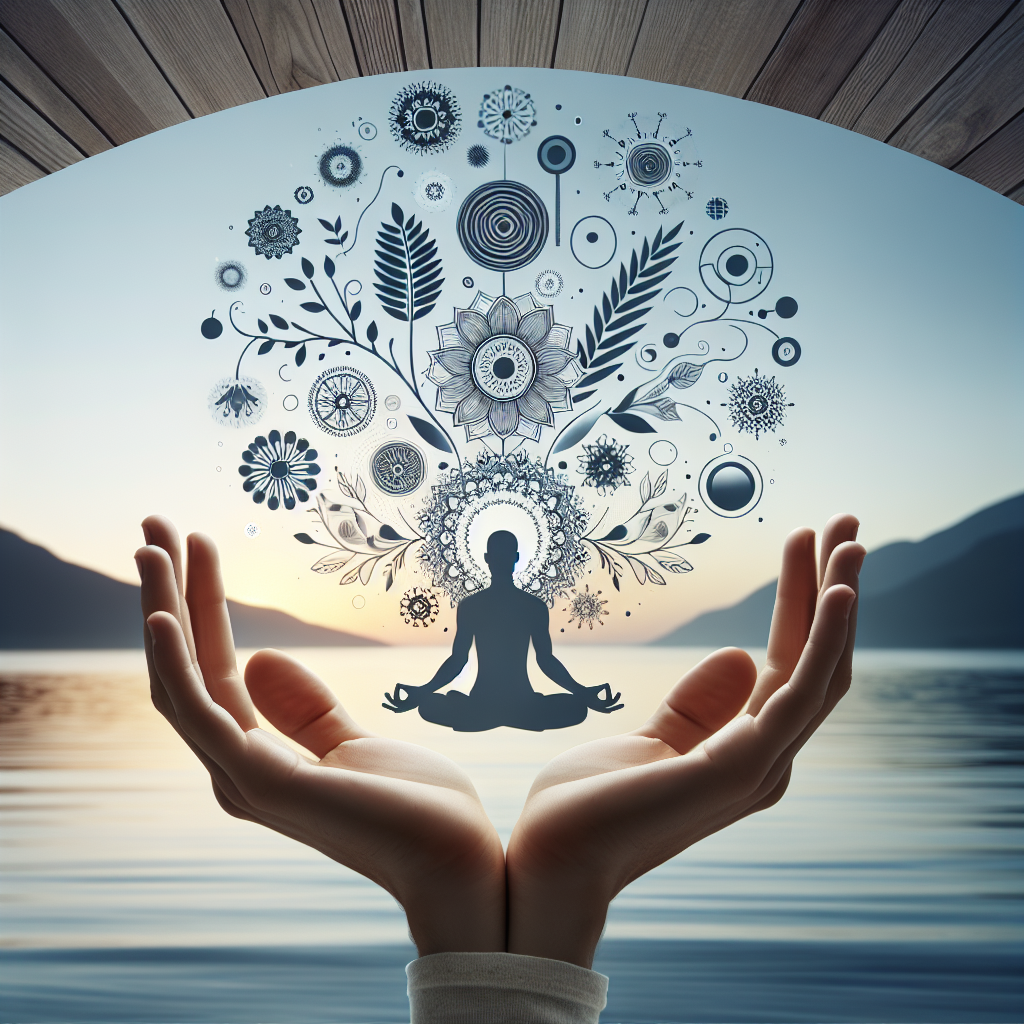When it comes to meditation, finding the right focus can make all the difference. While practicing this ancient technique, it can be challenging to quiet the mind and direct your thoughts. So, what exactly should you think about while meditating? This article explores different ideas for cultivating a peaceful and productive meditation practice. Whether it’s focusing on your breath, visualizing serene scenes, or repeating a mantra, discover the various possibilities that can enhance your meditation experience.
Choosing the Right Environment
Quiet and Peaceful Space
When it comes to meditation, finding the right environment is crucial. You want to create a quiet and peaceful space where you can fully immerse yourself in the practice. Choose a location where there are minimal distractions, such as a spare room in your house or a quiet corner in your local park. By eliminating external disturbances, you can focus your attention inward and create a serene atmosphere that will enhance your meditation experience.
Comfortable Seating
Comfort is key when it comes to maintaining focus during meditation. Find a seating arrangement that supports proper posture and allows you to relax. Whether it’s sitting cross-legged on a cushion or using a comfortable chair, ensure that your spine is straight and your body is at ease. This will help you avoid discomfort and physical distractions, allowing you to fully immerse yourself in the present moment.
Dim Lighting
Creating a soothing ambiance can greatly enhance your meditation practice. Opt for dim lighting or natural light sources if possible. Soft, gentle light helps create a calming atmosphere and encourages relaxation. Harsh, bright lights can be distracting and disrupt your focus. By adjusting your lighting to a softer hue, you can create a visually appealing environment that promotes a sense of tranquility and peace.
Preparation and Relaxation
Setting Intentions
Before beginning your meditation session, take a moment to set your intentions. Think about why you are meditating and what you hope to achieve through this practice. Are you seeking clarity, relaxation, or self-discovery? Setting clear intentions helps focus your mind and directs your energy towards your desired goals. By defining your intentions, you create a purposeful mindset that will guide your meditation experience.
Deep Breathing
Deep breathing is an effective technique to relax your mind and body before diving into meditation. Take a few moments to focus on your breath and engage in slow, deep inhalations and exhalations. This helps slow down your heart rate, lower blood pressure, and calm your nervous system. Deep breathing oxygenates your brain and promotes a sense of calmness, putting you in an optimal state for meditation.
Progressive Muscle Relaxation
Progressive muscle relaxation involves tensing and releasing different muscle groups in your body. Start from the top of your head and work your way down, intentionally tensing and then releasing each muscle group. This technique helps release tension and promotes an overall sense of relaxation. By consciously letting go of physical tightness, you create a more receptive environment for your meditation practice.

Focusing on the Breath
Observing the Inhales and Exhales
One of the core aspects of meditation is focusing on your breath. Spend some time simply observing your natural breathing pattern. Notice the sensation of the air entering and leaving your body. Be fully present in the experience, paying attention to the rise and fall of your abdomen or the feeling of the air passing through your nostrils. By anchoring your attention to your breath, you cultivate mindfulness and bring yourself into the present moment.
Counting the Breath
Counting the breath is a technique that helps to maintain concentration and foster a deep sense of inner calm during meditation. After observing a few normal breaths, start counting each inhale and exhale. For example, mentally count “one” on the inhalation, and “two” on the exhalation. Continue counting up to ten, and then start over again. If your mind wanders, gently bring your attention back to counting and start from one. This practice enhances focus and keeps the mind from wandering.
Feeling the Sensations
Another option while focusing on the breath is to tune into the physical sensations that arise with each breath. Notice the coolness of the air as it enters your nostrils, the warmth as you exhale, and the gentle rise and fall of your abdomen. Pay attention to any subtle shifts and changes that occur within your body as you breathe. By redirecting your awareness to these sensations, you cultivate a deeper connection with your body and promote a sense of bodily awareness.
Body Scan Meditation
Bringing Attention to Different Body Parts
Body scan meditation involves systematically bringing attention to different parts of your body from head to toe. Start by directing your focus to the top of your head and slowly move down, paying attention to each body part along the way. Notice any sensations or tension that may be present. This practice helps increase body awareness and allows you to identify and release any areas of physical discomfort or stress.
Noticing Sensations and Tension
As you scan each body part, pay close attention to any sensations or areas of tension you may encounter. This could be a tingling sensation, warmth, or tightness. Notice these feelings without judgment or resistance, simply acknowledging them for what they are. Becoming aware of tension in your body allows you to address it and release it, creating a greater sense of relaxation and ease.
Releasing Physical Discomfort
Body scan meditation provides an opportunity to let go of physical discomfort and tension. As you become aware of any areas of discomfort, visualize sending your breath and relaxation to those areas. Imagine the tension melting away with each exhalation. By intentionally releasing physical discomfort, you create space for greater comfort and relaxation within your body.

Practicing Loving-Kindness
Sending Love and Kindness to Oneself
Loving-kindness meditation involves cultivating feelings of love, compassion, and kindness towards yourself and others. Begin by directing loving thoughts and emotions towards yourself. Visualize yourself surrounded by love and repeat affirmations such as “May I be happy, may I be peaceful, may I be loved.” By nurturing love and kindness towards yourself, you are better equipped to extend it to others.
Extending Love to Others
Once you have cultivated feelings of love towards yourself, shift your focus to others. Visualize loved ones, friends, acquaintances, and even strangers. Send them love, compassion, and well-wishes. Imagine them feeling happy, peaceful, and loved. Practicing loving-kindness towards others promotes empathy, connection, and a sense of oneness with others.
Cultivating Compassion
By actively engaging in loving-kindness meditation, you are cultivating compassion. This practice strengthens your ability to empathize with others, understand their suffering, and wish them well. As you develop a compassionate mindset, you foster positive emotions within yourself and contribute to a more compassionate world.
Visualizations and Mantras
Creating Mental Images
Visualizations involve creating mental images in your mind’s eye. During meditation, visualize peaceful and serene scenes that invoke positive emotions. It could be picturing yourself on a beautiful beach, walking through a lush forest, or sitting beside a calm lake. These visualizations help calm the mind, reduce stress, and create a tranquil mental space.
Repeating Positive Affirmations
Mantras are powerful tools used in meditation to focus the mind and cultivate positive states of being. Choose affirmations that resonate with you and repeat them silently or aloud during your practice. Examples include “I am calm, I am centered, I am loved,” or “I am grateful for all the abundance in my life.” By reciting positive affirmations, you encourage a positive mindset and reinforce positive beliefs about yourself and the world.
Harnessing the Power of Words
Both visualizations and mantras harness the power of words and images to create a shift in mindset and emotional state. By consciously choosing uplifting imagery and affirmations, you can reprogram your mind and engage in self-directed positive thinking. This can lead to increased feelings of well-being, happiness, and a more optimistic outlook on life.
Mindfulness of Thoughts
Observing Thoughts without Judgment
Mindfulness of thoughts involves observing the stream of thoughts that arise in your mind without engaging with them or passing judgment. Be a curious observer and watch as thoughts come and go, without getting caught up in their content. This practice cultivates awareness of the constant flow of thoughts and helps detach from their influence, allowing you to experience a more peaceful state of mind.
Letting Thoughts Pass By
While observing your thoughts, it’s important to let them pass by without getting entangled in their narrative. Imagine your thoughts as clouds floating across the sky, appearing for a moment and then drifting away. Instead of fixating on any particular thought, gently redirect your attention to the present moment and refocus on your breath or another anchor of your choice. This practice helps break the grip of excessive thinking and promotes mental clarity.
Cultivating Non-Attachment
Non-attachment is an essential aspect of mindfulness meditation. It involves recognizing that thoughts are temporary and not a reflection of your true self. By cultivating non-attachment, you develop resilience and a sense of inner freedom. Thoughts no longer dictate your emotions or define you. Instead, you become an observer, allowing thoughts to come and go without becoming deeply immersed in their content.
Exploring Emotions and Feelings
Acknowledging and Accepting Emotions
During meditation, it’s important to acknowledge and accept the emotions that arise within you. Rather than pushing them away or judging them, allow yourself to fully experience your emotions without attachment. Emotions are a natural part of the human experience, and by accepting them with kindness and compassion, you create space for healing and self-discovery.
Examining the Sensations in the Body
Emotions often manifest as physical sensations in the body. During meditation, turn your attention inward and notice any physical sensations associated with your emotions. It could be a tightness in your chest, a knot in your stomach, or a warmth in your heart. Take the time to examine and be curious about these sensations without judgment or aversion. By observing the connection between emotions and bodily sensations, you deepen your understanding of yourself and your emotional landscape.
Finding the Root Causes
Meditation provides an opportunity to explore the root causes of your emotions and feelings. As you observe your thoughts, emotions, and bodily sensations, you may uncover underlying beliefs, past experiences, or patterns that contribute to your emotional state. This self-reflection allows you to gain insight into yourself and make conscious choices to cultivate emotional well-being and growth.
Reflecting on Gratitude
Thinking about Blessings and Fortunate Events
Gratitude is a powerful practice that can transform your mindset and overall well-being. During meditation, take a moment to reflect on the blessings and fortunate events in your life. Consider the people, experiences, and material possessions that bring you joy, fulfillment, and a sense of abundance. By focusing on gratitude, you shift your perspective from scarcity to abundance and foster a positive outlook.
Expressing Thanks to Others
Expressing gratitude to others is an integral part of the meditation practice. Think about the people in your life who have made a positive impact on you. Mentally thank them for their presence, support, and love. You can also extend gratitude to those you may not personally know, such as healthcare workers or teachers, who contribute to the greater well-being of society. By expressing gratitude, you cultivate appreciation and strengthen your relationships.
Shifting Perspective
Gratitude allows us to shift our perspective and see the world through a lens of appreciation. When we focus on our blessings and express gratitude, we naturally become more aware of the abundance that surrounds us. This shift in perspective helps cultivate contentment and reduces the tendency to constantly strive for more. Gratitude reminds us to savor the present moment and find joy in the simplicity of life.
Contemplating Existential Questions
Pondering the Meaning of Life
Meditation provides a space for deep contemplation on existential questions such as the meaning of life. Take the time to ponder the purpose and significance of your existence. Reflect on the values, beliefs, and goals that give your life meaning. Engaging in this exploration can lead to a deeper understanding of yourself and your place in the world.
Exploring the Nature of Reality
The practice of meditation allows for profound exploration of the nature of reality. By observing your thoughts, emotions, and sensations, you come to realize the impermanence and interconnectedness of all things. You may begin to question the nature of reality and challenge conventional perspectives. This contemplation opens the door to a deeper sense of spirituality and connection with the world around you.
Reflecting on the Self
Meditation offers an opportunity for introspection and self-reflection. With a calm and focused mind, reflect on your own identity, beliefs, and values. What aspects of yourself have the most significance to you? What areas of growth and self-improvement would you like to pursue? By reflecting on the self, you deepen your self-awareness and gain insights into your personal journey of growth and self-realization.
In conclusion, meditation is a deeply personal practice that can be approached from various angles. By choosing the right environment, preparing your mind and body, and exploring different meditation techniques, you can create a transformative meditation experience. Whether you focus on the breath, scan your body, cultivate loving-kindness, visualize, practice mindfulness, explore emotions, reflect on gratitude, or contemplate existential questions, each aspect of meditation offers unique benefits for personal growth and well-being. Allow yourself to embrace the process, be gentle with yourself, and enjoy the journey of self-discovery and inner peace that meditation can bring.
